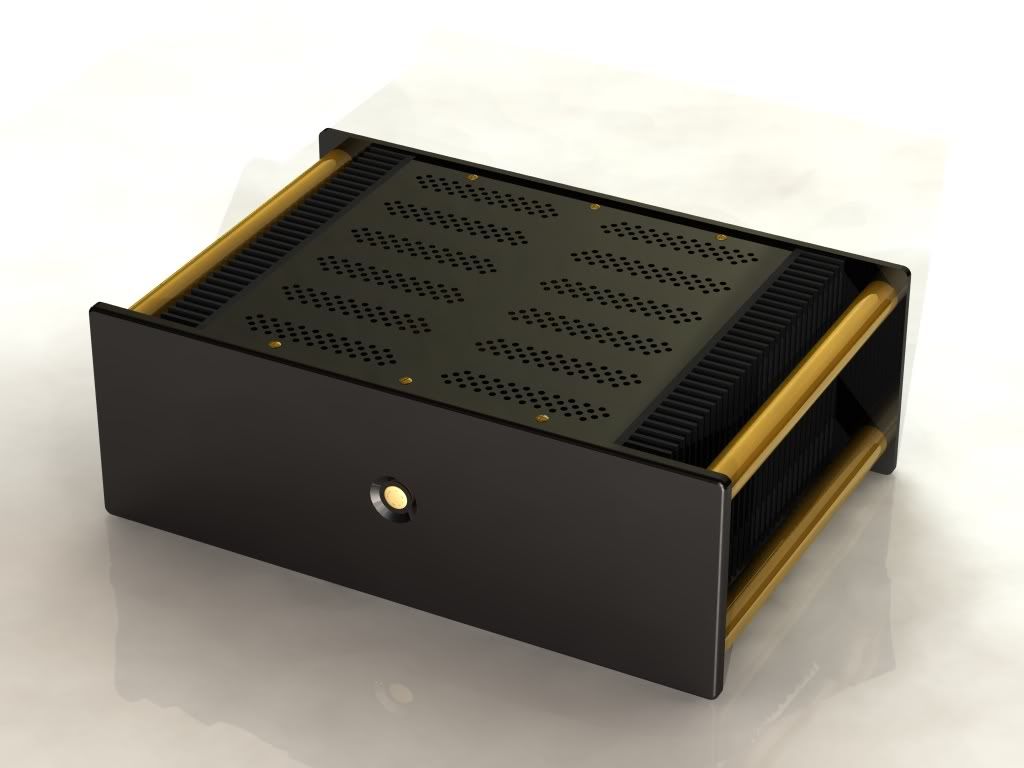MoodySteve
500+ Head-Fier
- Joined
- Jul 3, 2007
- Posts
- 713
- Likes
- 12
Quote:
1. I believe I just used Krylon primer, flat black and glossy clearcoat. I've also used Sherwin-Williams Duplicolor with decent results (self-etching primer, flat black, clear coat). To polish the clearcoat, I used 3M wet/dry sandpaper up to 2000 grit, rubbing compound and a rubber sanding block.
2. The dimensions are about 17" x 12" x 3" and the transformer and σ22 are both inside. I have virtually no hum after switching to a shielded transformer.
3. I'd recommend natural aluminum - it's light, inexpensive and relatively easy to work with.
4. By 'electrostatic painting' do you mean powder coating? It's worth looking into, since powder coating might be less expensive than painting (less steps involved). You can get glossy finishes but they tend to be heavily orange-peeled in appearance. You'd want bare aluminum if you were considering powder-coating.
| Originally Posted by pila405 /img/forum/go_quote.gif @Steve - Thank you very much again. Helpful as always. Can you tell me please the exact products' name YOU used for the painting [primer/flat black/clearcoat]? And what are the beta22 dimensions? If I paint the aluminium, should it be anodized black or natural? Do you suggest on any other material? What do you think about professional electrostatic painting? Does the Beta22 you have includes the O22 inside the same chassis? @Koyaan I. Sqatsi - It will be great! Thank you very much! |
1. I believe I just used Krylon primer, flat black and glossy clearcoat. I've also used Sherwin-Williams Duplicolor with decent results (self-etching primer, flat black, clear coat). To polish the clearcoat, I used 3M wet/dry sandpaper up to 2000 grit, rubbing compound and a rubber sanding block.
2. The dimensions are about 17" x 12" x 3" and the transformer and σ22 are both inside. I have virtually no hum after switching to a shielded transformer.
3. I'd recommend natural aluminum - it's light, inexpensive and relatively easy to work with.
4. By 'electrostatic painting' do you mean powder coating? It's worth looking into, since powder coating might be less expensive than painting (less steps involved). You can get glossy finishes but they tend to be heavily orange-peeled in appearance. You'd want bare aluminum if you were considering powder-coating.



